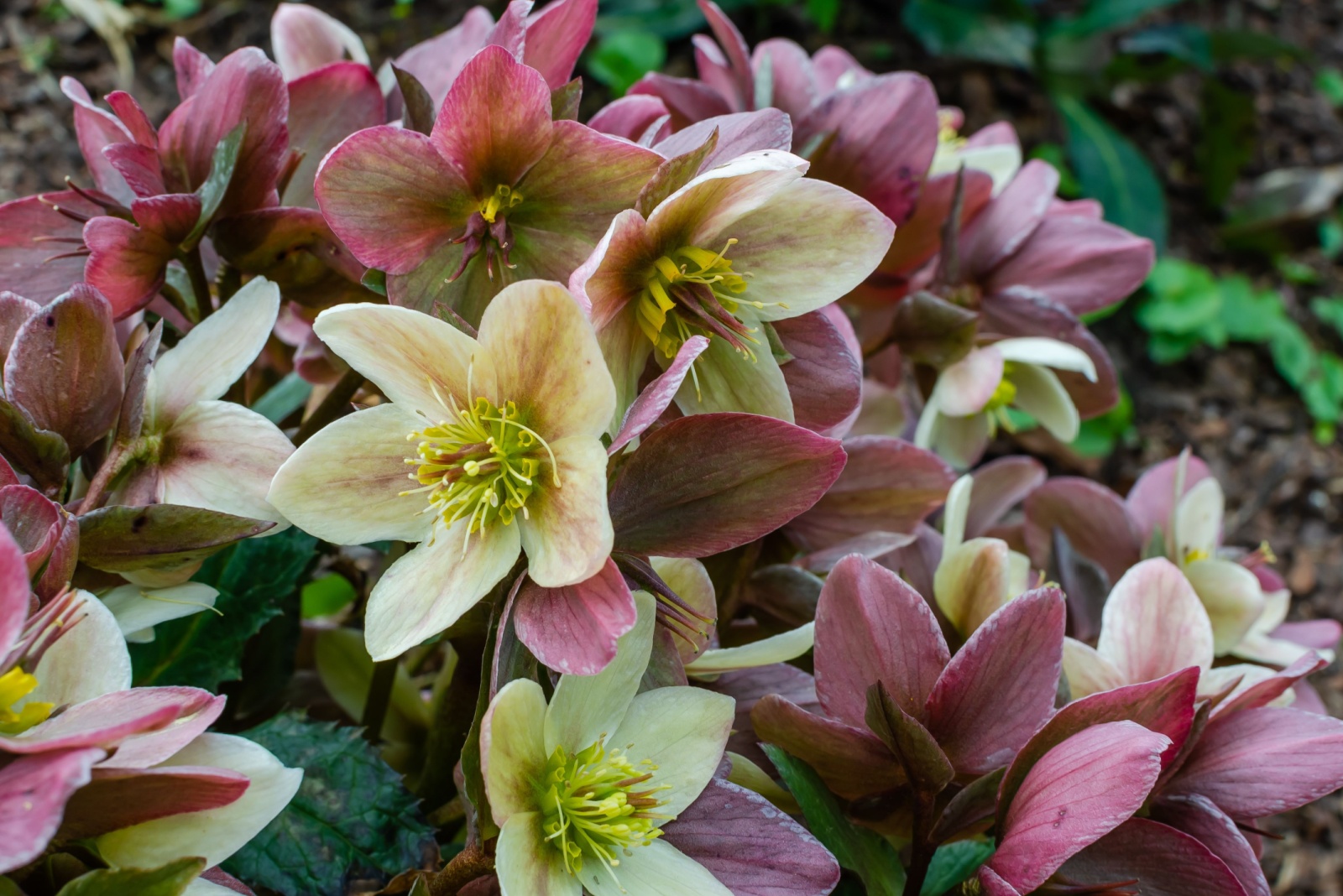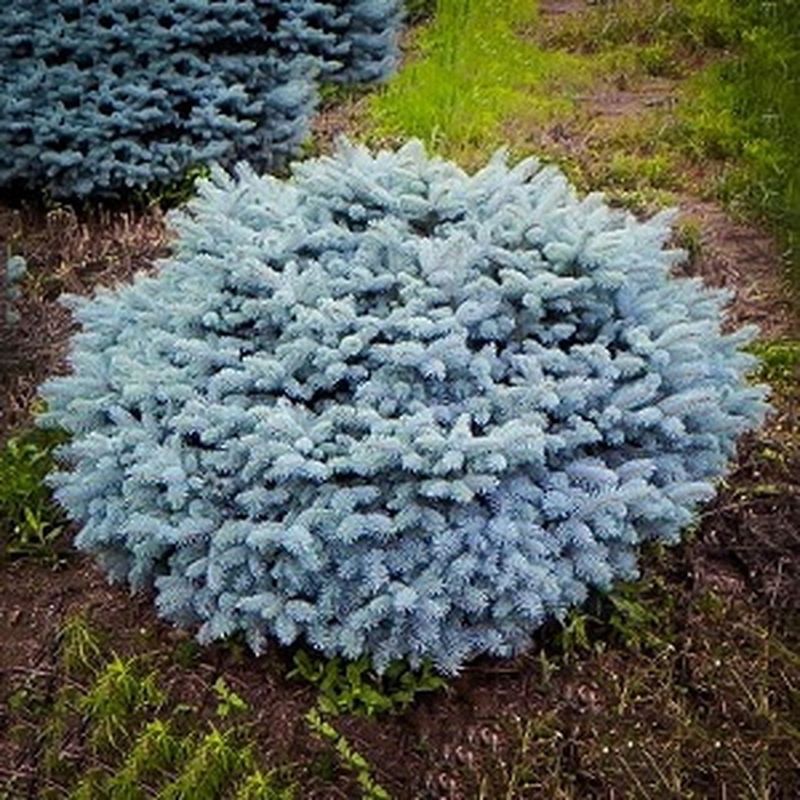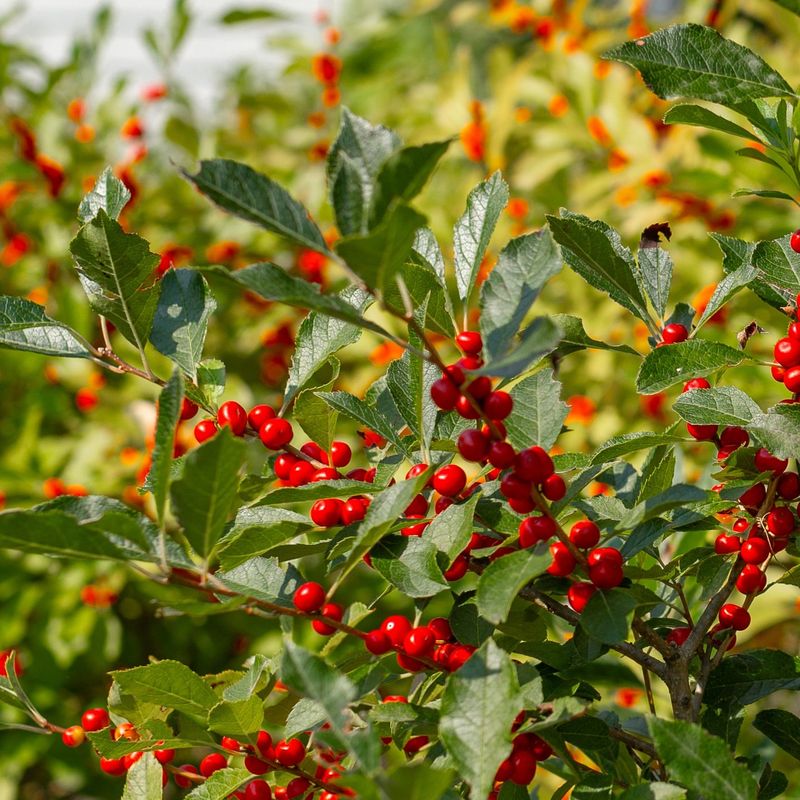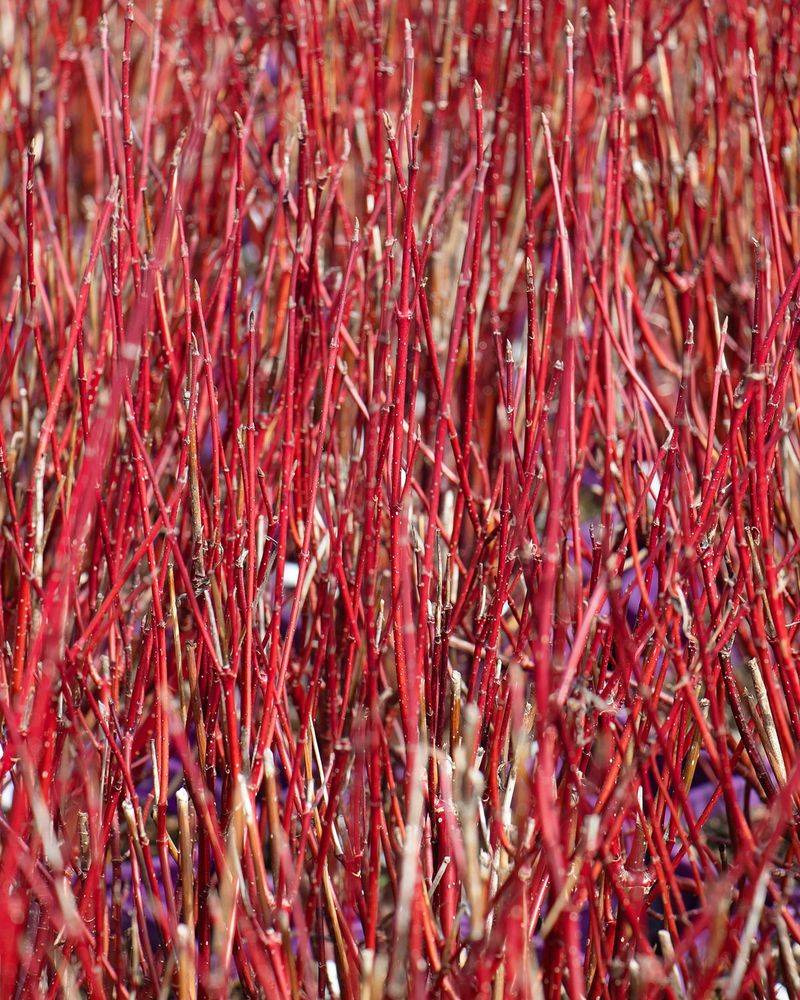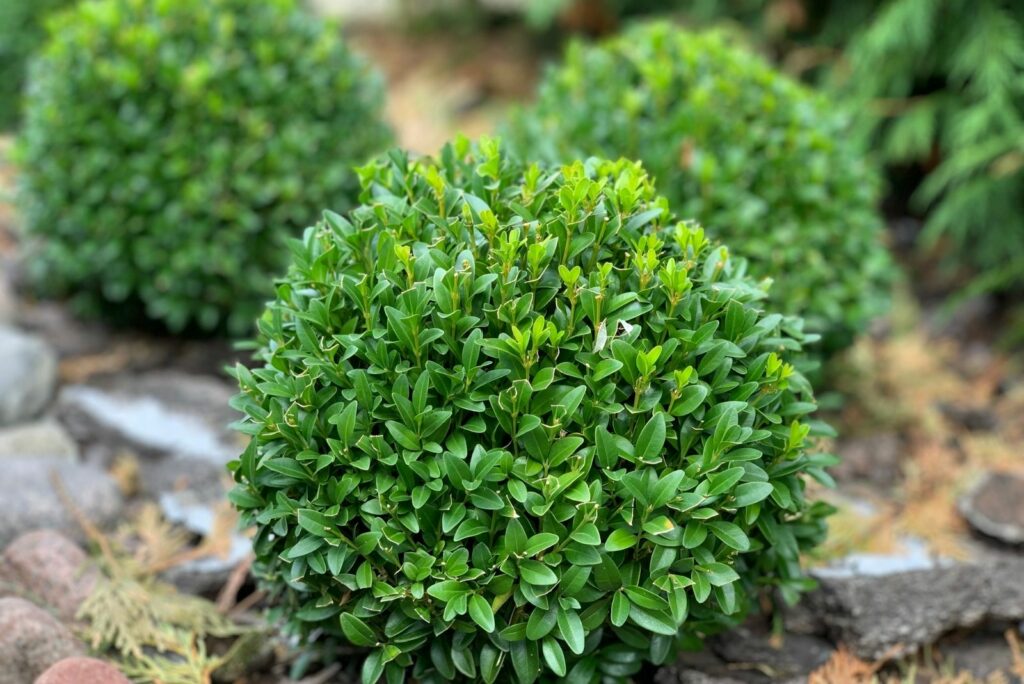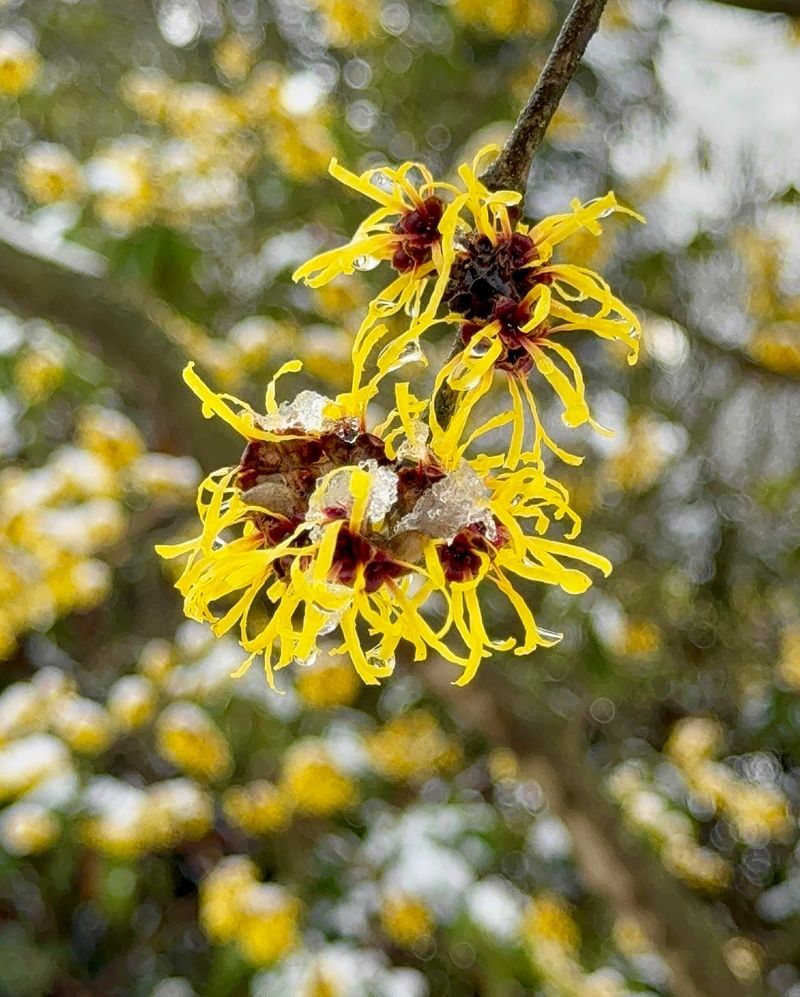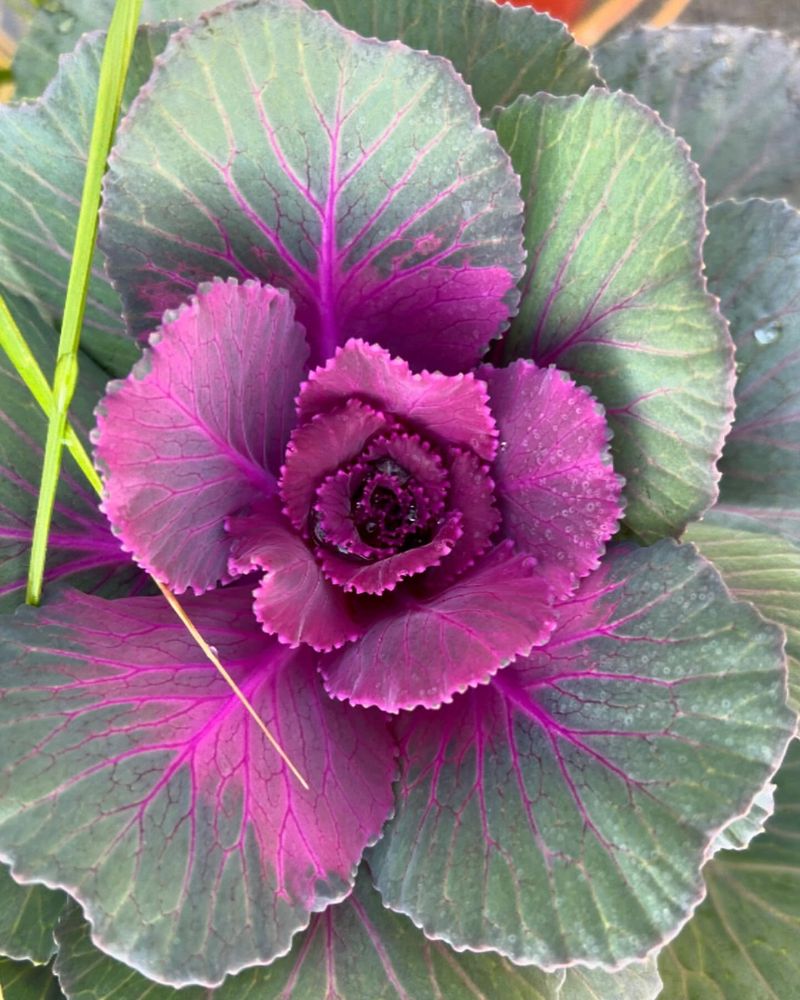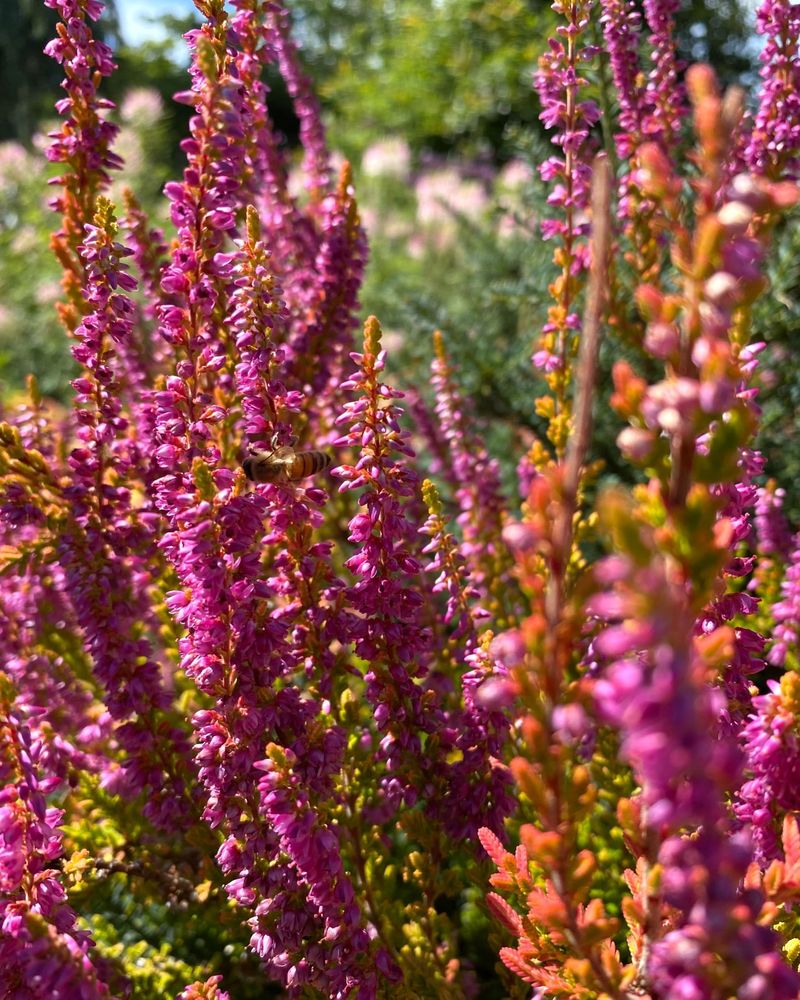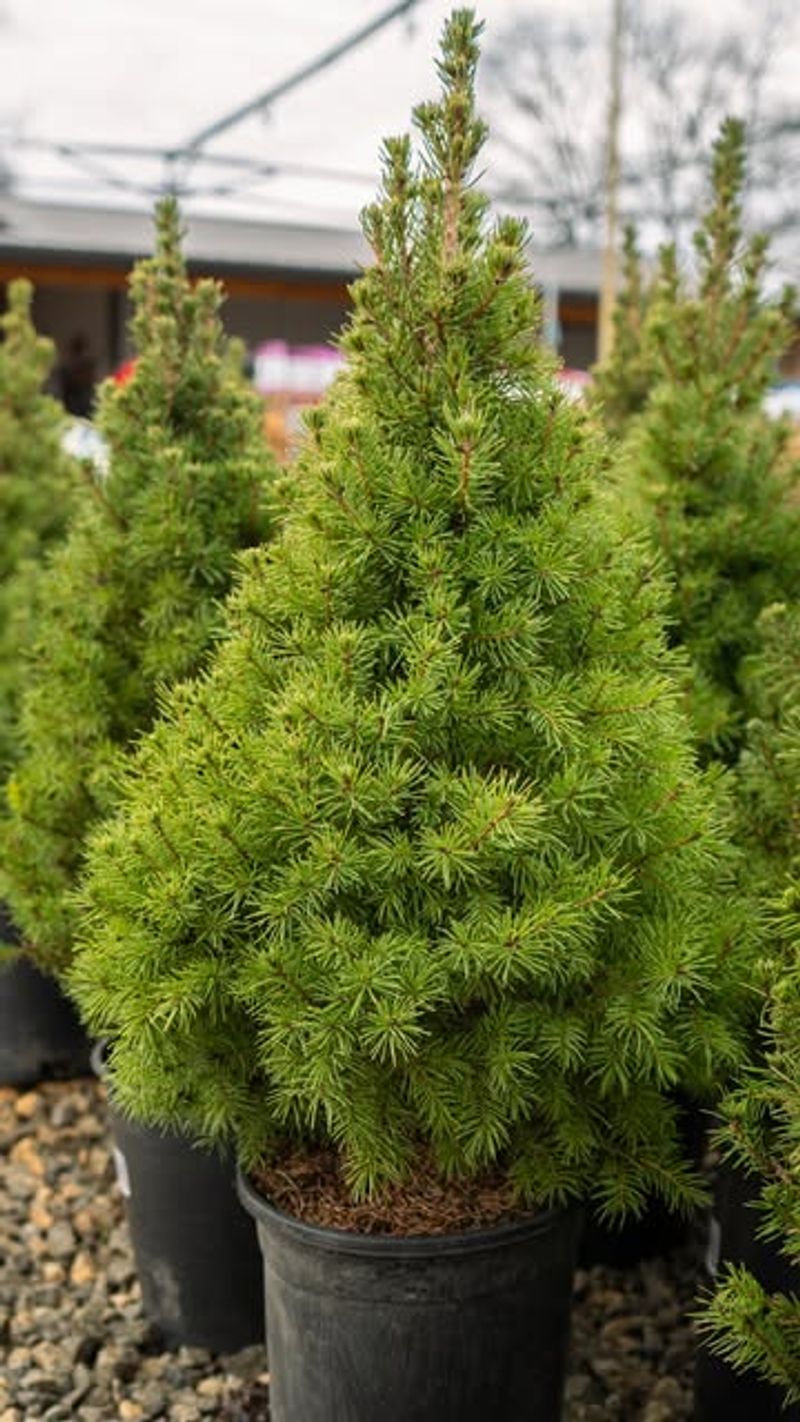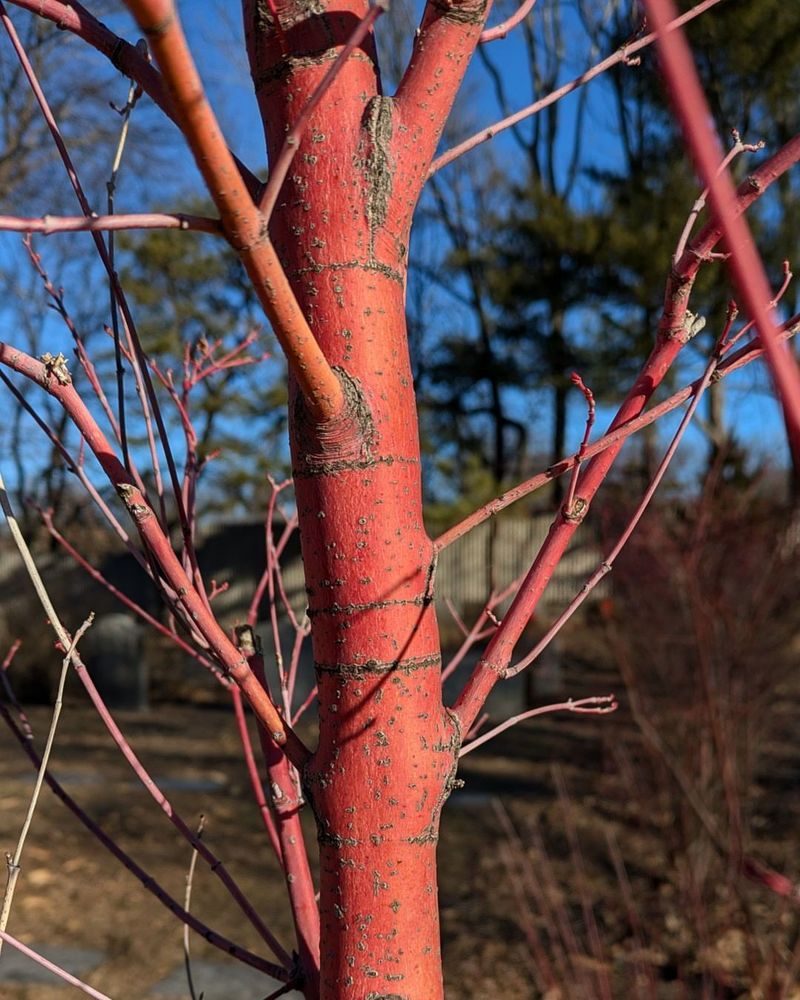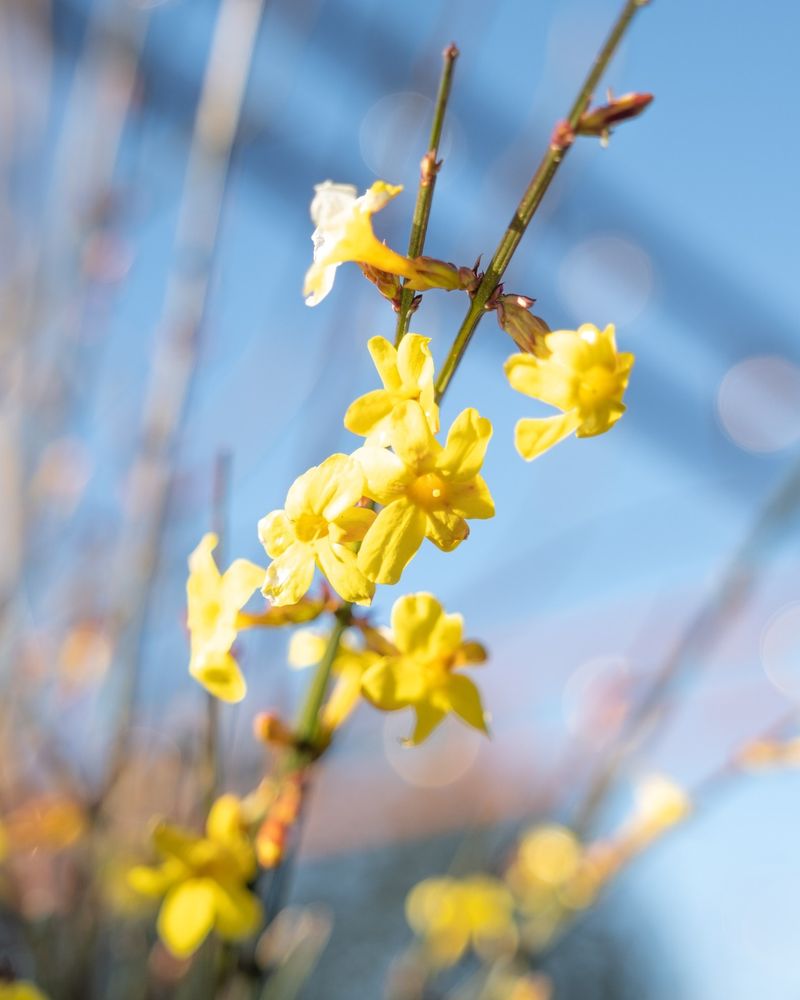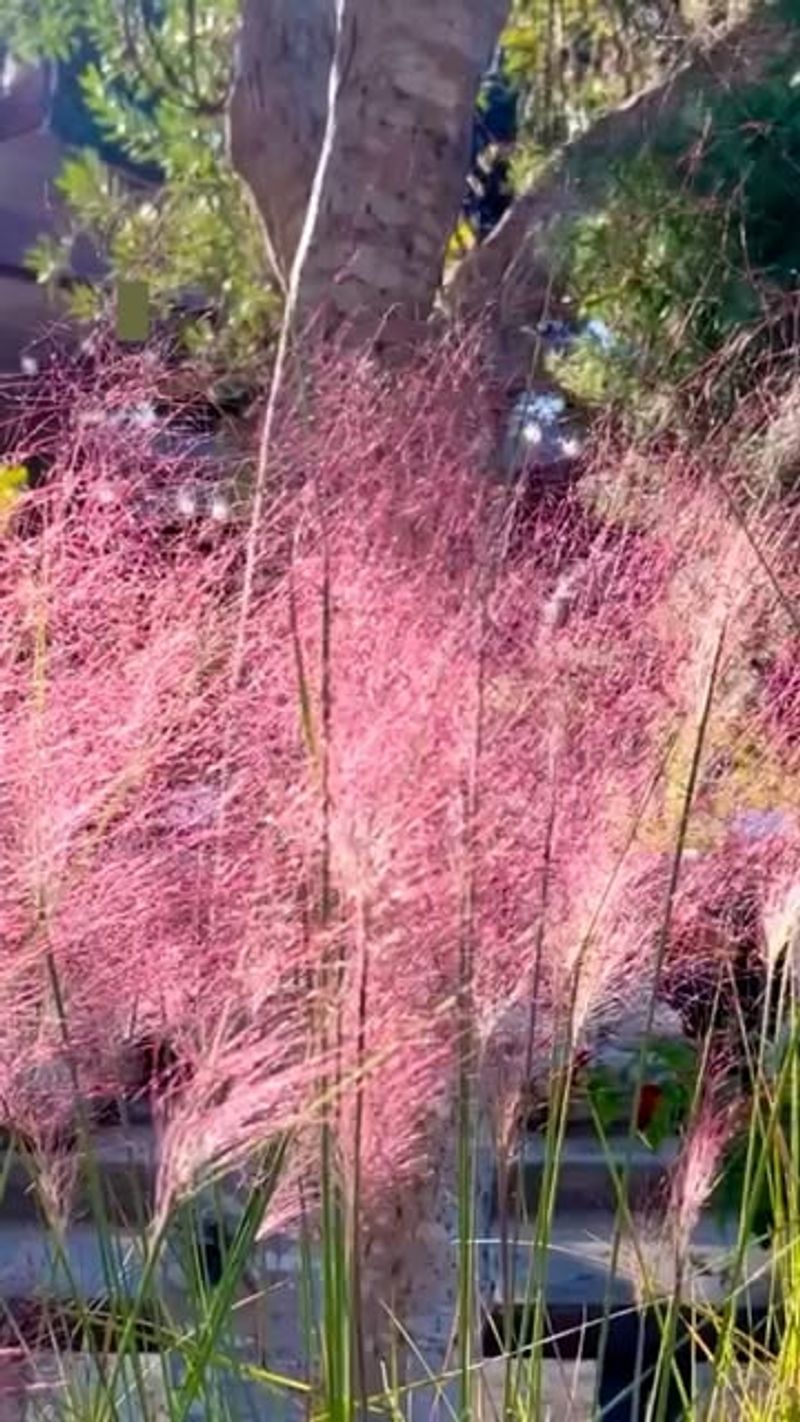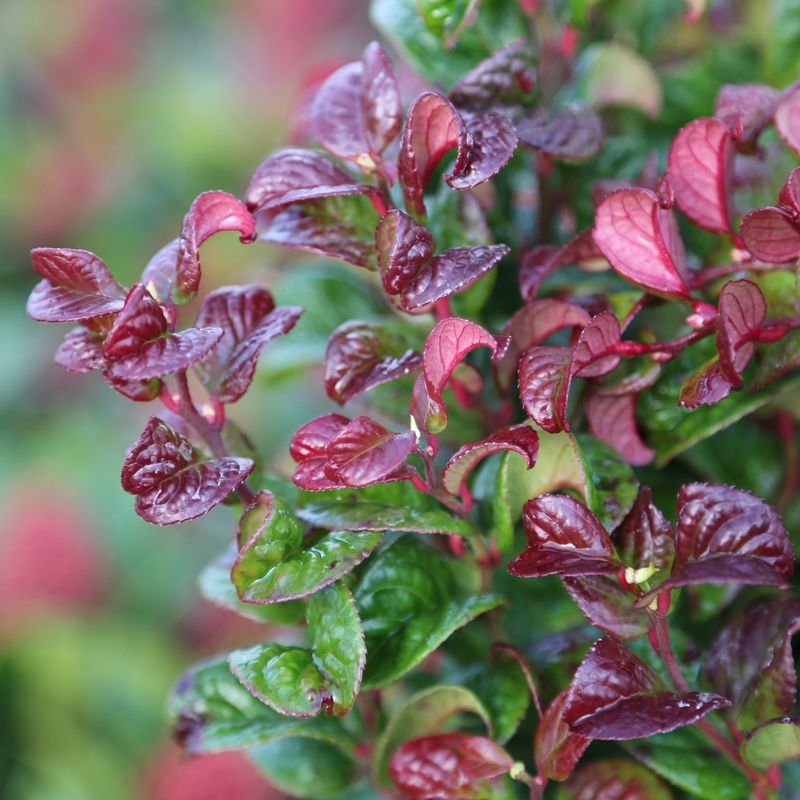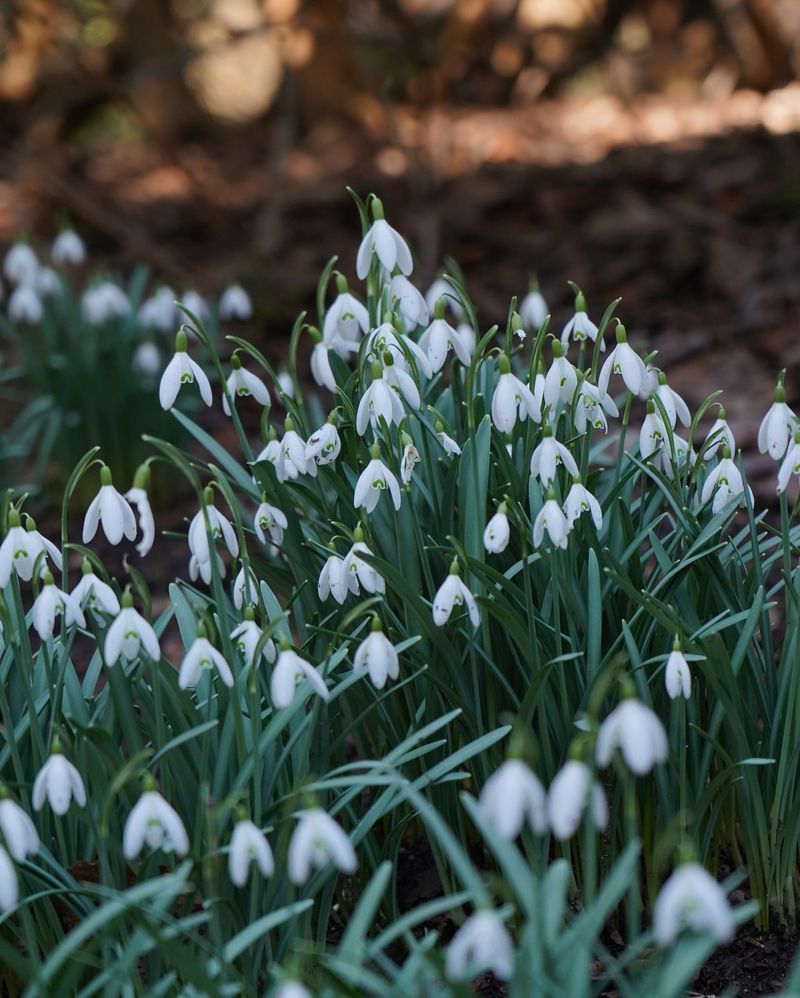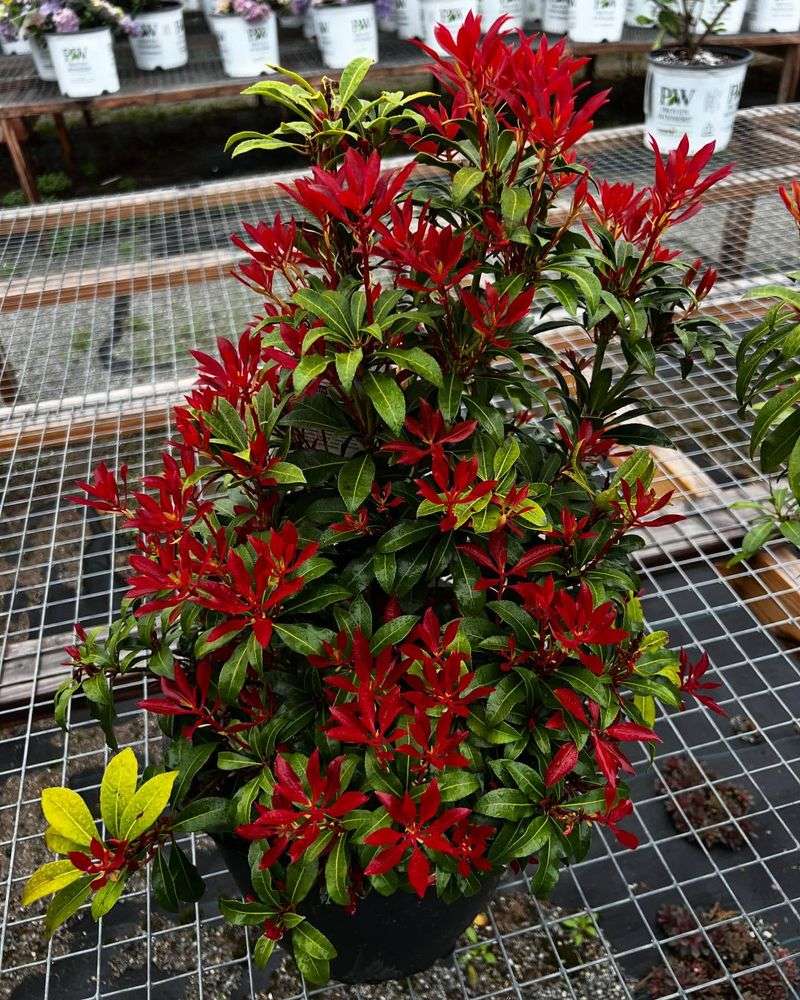Winter in New Jersey doesn’t have to leave your yard looking dull and bare. With the right plants, your landscape can stay vibrant even in the coldest months. I’ve spent years testing hardy varieties that truly shine in our Garden State winters.
From evergreen shrubs to colorful berries and textured grasses, these picks add life and interest when everything else fades. They’re tough enough to handle snow, frost, and fluctuating temps without losing their charm.
If you want curb appeal that lasts through January and beyond, this curated list is your go-to. These winter warriors will keep your yard looking fresh while neighbors are still waiting for spring.
1. American Holly
Nothing says winter like the bright red berries of American Holly against dark green leaves. I planted several along my driveway five years ago, and they’ve become neighborhood landmarks during December.
They’re incredibly tough in New Jersey winters. Mine have survived temperatures well below freezing without losing their glossy appearance. Just remember they need both male and female plants to produce berries.
Place them near entrances where visitors can appreciate their festive look. I’ve found they pair beautifully with low-growing evergreens for a multi-layered winter display that maintains interest even under snow.
2. Blue Spruce
Blue Spruce trees add a stunning silver-blue accent to winter landscapes that’s hard to beat. My neighbor’s dwarf variety has maintained perfect form for over a decade without needing much maintenance.
The unique color stands out dramatically against New Jersey’s winter backdrop. These conifers hold their needles all season and create beautiful silhouettes when dusted with snow.
Consider planting one as a focal point near your home’s entrance. I’ve noticed they look particularly magical when lit with simple white lights during the holiday season, creating a winter wonderland effect that lasts for months.
3. Winterberry
Unlike its cousin American Holly, Winterberry drops its leaves in fall, leaving stems covered with bright berries. The effect is spectacular—like nature’s own holiday decoration standing proud against white snow.
These native shrubs thrive in New Jersey’s climate and soil conditions. I planted a small grouping near my mailbox three winters ago, and they’ve become quite the conversation starter with delivery people.
Birds absolutely love them too. Last January, I counted four different species feasting on the berries during one snowy morning. Just like holly, you’ll need both male and female plants if you want those eye-catching berries.
4. Red Twig Dogwood
The bright red stems of this dogwood create a striking display that actually looks better after the leaves fall. My front yard specimens practically glow against the snow, adding much-needed color to gray winter days.
What’s fascinating is how the color intensifies as temperatures drop. The colder it gets in our New Jersey winters, the more vivid the red becomes. It’s like getting a reward for enduring the chilly weather!
Prune them in early spring for best color. I’ve learned that younger stems show the brightest red, so don’t be shy about cutting back about a third of the older branches each year to encourage fresh growth.
5. Boxwood
When everything else looks chaotic in winter, boxwoods provide welcome structure and formality. Their dense, evergreen foliage holds up remarkably well through New Jersey’s snow and ice storms.
I’ve used them to create a simple pattern near my front door. Even under several inches of snow, their distinctive shapes remain visible, providing essential structure to the winter garden.
Choose cold-hardy varieties like ‘Winter Gem’ or ‘Green Velvet’ for best results in our climate. A light burlap wrap can help prevent winter burn on exposed sites, though mine have survived several harsh winters with minimal protection in a somewhat sheltered location.
6. Witch Hazel
Witch hazel offers something truly special—winter flowers! The spidery yellow or orange blooms appear on bare branches between January and March, when almost nothing else dares to flower in our New Jersey climate.
The subtle fragrance is an unexpected treat during winter walks. I planted mine along the path to the front door, and guests always do a double-take when they spot flowers in February.
These native shrubs grow slowly but eventually reach 10-15 feet. Mine took about four years before flowering abundantly, but the wait was absolutely worth it. The flowers last for weeks, even persisting through light snowfalls.
7. Ornamental Cabbage
For instant winter color in garden beds, nothing beats ornamental cabbage. The pink, purple, and white leaves actually become more intense after frost hits, unlike most plants that fade away.
I plant them in clusters near my front walkway every fall. They hold up amazingly well through New Jersey’s freeze-thaw cycles, often looking perfect until February when other spring preparations begin.
Combine them with small evergreens for a finished look. Last winter, I surrounded mine with miniature white pine seedlings, creating a display that looked intentional and polished even in January when most gardens look abandoned.
8. Heather
Winter-blooming heathers bring unexpected color to the garden from November through April. Their tiny, bell-shaped flowers in shades of pink, purple, and white persist through snow and ice with remarkable resilience.
Beyond the flowers, many varieties have foliage that changes to bronze, copper, or red tones in winter. My patch near the front walk shifts to a beautiful burgundy that complements the pink flowers perfectly.
Plant them in groups for best effect. I’ve found they thrive in the acidic soil common in many parts of New Jersey, especially when given good drainage. A small section of my front yard that was previously bare now provides interest all winter long.
9. Dwarf Alberta Spruce
These perfect little Christmas-tree shaped evergreens maintain their neat, conical form without pruning. Standing about 4-6 feet tall at maturity, they’re ideal for framing entrances or adding structure to winter beds.
Their dense, soft-textured needles catch snow beautifully. After last year’s big February storm, mine looked like they were frosted with powdered sugar – absolutely magical against the brick of our house.
Plant them where they’ll be protected from harsh winter winds. I lost one on the exposed corner of my property, but the pair flanking my front steps has thrived for seven years now. They’re slow-growing, gaining only a few inches each year.
10. Hellebores
Often called Christmas or Lenten roses, hellebores are the unsung heroes of the winter garden. Their nodding flowers emerge as early as February in New Jersey, sometimes even pushing through snow with their sturdy stems.
The leathery, evergreen foliage provides structure all winter long. I’ve planted several varieties along my front foundation, where their attractive leaves complement nearby shrubs even before they bloom.
Once established, they’re remarkably drought-tolerant and deer-resistant. After struggling with deer damage to other plants, finding these beautiful, animal-proof flowers was a game-changer for my winter garden. They’ve spread slowly but steadily over the years.
11. Japanese Maple
Though leafless in winter, Japanese maples offer stunning architectural form with their graceful branching patterns. The intricate silhouettes become even more pronounced against winter skies or when outlined by snow.
Some varieties display colorful bark that adds winter interest. My ‘Sango Kaku’ has coral-red branches that actually appear brighter during the coldest months, creating a warm glow in the garden.
Place them where winter sun will backlight the branches. I positioned mine where the low afternoon sun shines through it, creating a beautiful display of shadows on nearby snow. Just protect young trees from harsh winds during their first few New Jersey winters.
12. Arborvitae
These reliable evergreens create excellent living walls and windbreaks that look good year-round. Their dense, fan-like foliage holds up well to New Jersey’s snow loads without splaying open like some other evergreens.
I’ve used a row of ‘Emerald Green’ to define my property edge. They maintain their rich color throughout winter, providing a welcome green backdrop when everything else has gone dormant.
Choose varieties rated for your specific hardiness zone. After losing two to a particularly harsh winter, I replaced them with ‘North Pole’ arborvitae, which have proven much more resilient to our occasional temperature extremes while maintaining the same attractive columnar form.
13. Winter Jasmine
Unlike its fragrant summer cousins, winter jasmine (Jasminum nudiflorum) produces bright yellow flowers on bare green stems from January through March. The cheerful blooms appear long before most other plants show signs of life.
This semi-vining shrub can be trained up trellises or allowed to cascade over walls. I’ve let mine spill over a small retaining wall near my front steps, where it brightens an otherwise dull corner of the winter landscape.
Extremely hardy in New Jersey, it’s survived our coldest winters without protection. The flexible stems rarely break under snow load, and the plant quickly recovers from any winter damage once spring arrives. It’s been consistently reliable for over eight years in my garden.
14. Inkberry Holly
Native to New Jersey, inkberry holly provides evergreen structure without the prickly leaves of its more common relatives. The rounded form and glossy foliage look neat and intentional all winter long.
Unlike other hollies, the berries are black rather than red. While less showy, they persist through winter and provide food for birds. My backyard specimens regularly attract cedar waxwings in late winter when other food sources are scarce.
Plant them in groups for best effect. I’ve created a small hedge along my driveway that maintains its good looks even after being buried in plowed snow. The compact varieties like ‘Shamrock’ stay particularly neat without much pruning.
15. Ornamental Grasses
Leaving ornamental grasses standing through winter creates instant drama in the landscape. The dried plumes catch snow and glisten when backlit by low winter sun, creating a magical effect on frosty mornings.
I’ve planted several varieties of Miscanthus and Panicum that stand up beautifully all winter. They add movement to the garden when winter winds blow, making the landscape feel alive even in January.
Cut them back in early spring before new growth emerges. I’ve found the dried stalks provide excellent winter interest until about March in our New Jersey climate, when they begin to look a bit tattered and it’s time for their annual haircut.
16. Leucothoe
Leucothoe’s arching branches and glossy evergreen leaves bring elegant structure to shady areas. What makes it special for winter is how the foliage transforms to deep burgundy or bronze when cold weather arrives.
The color change is quite dramatic in our New Jersey climate. My plants near the front porch shift from green to rich wine-red by December, maintaining this color until spring. The effect is subtle but sophisticated.
They prefer acidic soil and partial shade, making them perfect companions for rhododendrons and azaleas. I’ve found them to be surprisingly deer-resistant too, which is always a bonus in our suburban neighborhood where deer pressure is constant throughout winter.
17. Snowdrops
These tiny bulbs often bloom while snow still covers the ground, sometimes as early as February in milder New Jersey winters. The delicate white flowers hanging from slender green stems are a welcome sign that spring isn’t far off.
Plant them in drifts where they’ll be visible from windows or walkways. I’ve naturalized hundreds under a deciduous tree near my front window, creating a magical carpet of white that’s visible even during winter storms.
Once established, they multiply reliably year after year. My original planting of about 50 bulbs has expanded to cover nearly 100 square feet over the past decade, requiring zero maintenance beyond enjoying their brief but precious winter show.
18. Pieris Japonica
Pieris offers triple-season interest with evergreen foliage, winter flower buds, and early spring blooms. The pendulous flower clusters form in fall and remain decorative all winter before opening in March or April.
New growth emerges in striking red or bronze tones. My ‘Mountain Fire’ variety puts on a spectacular show of bright red new leaves just as winter is ending, bridging the gap between seasons beautifully.
Site them in protected locations in New Jersey gardens. Mine thrives against an east-facing wall that shields it from the worst winter winds while still allowing good light. The combination of glossy leaves and dangling flower buds makes it look intentionally decorative even in January’s harshest weather.

